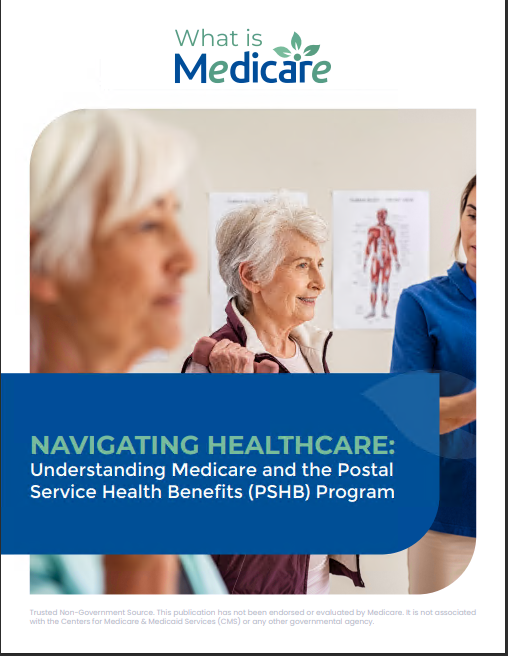Key Takeaways:
-
Medicare in 2025 offers a comprehensive structure that spans hospital care, outpatient services, and prescription drug coverage, each with specific costs and limitations.
-
Understanding what Medicare covers and the associated costs can help you make informed healthcare decisions and avoid unexpected expenses.
Your Guide to Medicare Coverage in 2025
Navigating Medicare can feel like a daunting task, but understanding its key components will make the process much simpler. Medicare provides critical healthcare coverage for millions of Americans, focusing on hospitals, outpatient services, and prescription drugs. Let’s break down exactly what’s covered under each part and how you can make the most of your benefits in 2025.
What Medicare Part A Covers
Medicare Part A is your hospital insurance, designed to cover inpatient care and related services. This includes:
-
Hospital Stays: Coverage kicks in after you meet the inpatient hospital deductible of $1,676 per benefit period in 2025. Part A pays for your room, meals, nursing care, and other services during your stay. However, you’ll pay daily coinsurance of $419 starting on day 61 and $838 for lifetime reserve days beyond 90 days.
-
Skilled Nursing Facility Care: If you need rehabilitation or specialized nursing care after a hospital stay of at least three days, Part A covers up to 100 days. After the first 20 days, you’ll pay $209.50 per day. This care is critical for recovery after major surgeries or illnesses.
-
Home Health Care: For limited periods, Medicare covers skilled nursing or therapy services provided at home. These services can help you recover from an illness or injury while remaining in a familiar environment.
-
Hospice Care: If you’re terminally ill, Part A covers hospice care to help manage pain and symptoms. This includes counseling and support for your family during a challenging time.
Medicare Part A provides the foundation for inpatient care, ensuring you have access to essential services during a hospital stay or recovery period. Understanding these benefits can help you plan for potential healthcare needs in the future.
Medicare Part B: Beyond the Hospital
Medicare Part B is your go-to for outpatient services. In 2025, this includes:
-
Doctor Visits: Whether it’s a routine check-up or a specialist appointment, Part B helps cover costs after meeting the annual deductible of $257. Regular doctor visits are essential for maintaining your health and addressing issues before they become serious.
-
Preventive Services: Screenings, vaccines, and annual wellness visits are covered without additional costs as long as they meet Medicare’s criteria. Services like mammograms, colonoscopies, and flu shots can help you stay healthy and catch potential problems early.
-
Durable Medical Equipment (DME): Need a walker, wheelchair, or oxygen equipment? Medicare Part B can help with these items if prescribed by your doctor. These tools can significantly improve your quality of life and independence.
-
Mental Health Services: Coverage includes therapy, psychiatric care, and hospital-based outpatient mental health programs. With increasing focus on mental health, these services are crucial for emotional well-being.
-
Outpatient Procedures and Tests: Part B also covers imaging tests like MRIs, lab work, and outpatient surgeries. These services are vital for diagnosing and treating various health conditions.
After you meet the deductible, you generally pay 20% of the Medicare-approved amount for covered services. Keep in mind that higher-income individuals may pay an adjusted premium based on their income. Understanding these costs will help you plan your healthcare budget effectively.
Medicare Part D: Prescription Drug Coverage
Part D is essential for managing prescription drug costs, and 2025 brings significant improvements:
-
Out-of-Pocket Cap: Starting in 2025, Part D introduces a $2,000 cap on out-of-pocket prescription drug costs. This change eliminates the coverage gap (also known as the ‘donut hole’) and offers relief to those with high medication expenses. It’s a game-changer for individuals who rely on costly medications.
-
Deductible: The maximum deductible for Part D plans will be $590 in 2025. After meeting the deductible, you’ll share the costs through copayments or coinsurance. Staying informed about your plan’s structure ensures you can manage your prescription costs effectively.
-
Medication Access: Part D plans must cover a wide range of medications, but each plan’s formulary (list of covered drugs) may vary. Be sure to review your plan’s drug list during open enrollment to ensure your prescriptions are covered. It’s also wise to check for changes to formularies annually to avoid surprises.
With the introduction of the $2,000 cap, Part D makes it easier for beneficiaries to budget for medications, offering peace of mind and financial security.
Medicare Advantage (Part C): A Bundled Option
Medicare Advantage plans (Part C) combine Parts A, B, and often D, along with additional benefits. These plans are offered by private insurers approved by Medicare, so their coverage and costs can vary. Popular extras include vision, hearing, and dental benefits.
-
Comprehensive Coverage: Medicare Advantage plans often provide a more streamlined approach to healthcare, bundling various services into a single plan. This can simplify your healthcare management.
-
Flexibility and Extras: Many plans include benefits like fitness programs, over-the-counter medication allowances, and transportation to medical appointments. However, it’s essential to review network restrictions and plan details to ensure they meet your needs.
While Part C can offer more comprehensive coverage, always review the plan’s network restrictions and cost-sharing requirements before enrolling. Open enrollment runs from October 15 to December 7, providing a critical window to evaluate and switch plans if needed.
Coverage for Specific Needs: Medicare’s Focus Areas
Medicare’s coverage extends to specialized areas to meet the diverse needs of beneficiaries:
-
Preventive Care: From flu shots to cancer screenings, preventive services are a priority under Medicare. Staying on top of these can help detect and prevent serious health conditions early.
-
Chronic Care Management: If you live with conditions like diabetes or heart disease, Medicare offers resources, including wellness programs and specific services, to help manage your health effectively. Care management can include check-ins with healthcare providers and access to essential supplies.
-
Telehealth Services: In recent years, Medicare has expanded coverage for telehealth, making it easier to access care from the comfort of your home. These services often include virtual doctor visits and mental health counseling. This approach is especially beneficial for individuals in rural areas or those with mobility challenges.
By addressing specific healthcare needs, Medicare ensures its beneficiaries receive tailored and effective care.
Costs You Need to Plan For
While Medicare provides significant coverage, it’s not free. Here’s what to expect:
-
Premiums: Most people won’t pay a premium for Part A if they’ve worked enough quarters. For Part B, the standard monthly premium in 2025 is $185. Part D premiums vary by plan, depending on the level of coverage.
-
Deductibles and Coinsurance: As mentioned earlier, Parts A, B, and D have specific deductibles. Once met, you’ll typically pay coinsurance or copayments for covered services. Planning for these expenses ensures you won’t face financial strain.
-
Supplemental Coverage: Many beneficiaries opt for Medigap plans to help cover costs like deductibles and coinsurance that Original Medicare doesn’t pay. While Medigap comes with additional premiums, it can provide significant cost savings over time.
By understanding these costs upfront, you can avoid surprises and create a budget that works for your healthcare needs.
Enrollment Periods and Important Deadlines
Timing is everything when it comes to Medicare. Here are the key enrollment periods:
-
Initial Enrollment Period (IEP): This 7-month window begins three months before your 65th birthday month and ends three months after. It’s your first chance to enroll in Medicare Parts A and B. Missing this window could result in penalties.
-
Annual Enrollment Period (AEP): From October 15 to December 7, you can make changes to your Medicare Advantage or Part D plans. Changes take effect on January 1. This period is crucial for ensuring your coverage aligns with your needs.
-
General Enrollment Period (GEP): If you missed your IEP, you can enroll in Parts A and B from January 1 to March 31 each year, with coverage starting July 1. Late penalties may apply, so act promptly.
-
Special Enrollment Periods (SEP): Certain life events, like losing employer coverage, may qualify you for an SEP to sign up for Medicare without penalties. Knowing these rules ensures you can avoid unnecessary costs.
Medicare and You: Making Informed Decisions
Medicare is not a one-size-fits-all program. Your healthcare needs and budget will determine which parts and plans are best for you. Here’s how to approach it:
-
Evaluate Your Health Needs: Assess your current health, ongoing conditions, and medications to identify the most critical coverage areas.
-
Compare Plans: Use tools like the Medicare Plan Finder to explore your options during open enrollment. Pay attention to premiums, deductibles, and out-of-pocket maximums.
-
Stay Informed: Read your Annual Notice of Change (ANOC) to understand how your current plan may change in the upcoming year. Staying proactive ensures you make the most of your Medicare benefits.
Ready to Navigate Your 2025 Medicare Journey?
With the right knowledge, Medicare can be a powerful tool for managing your healthcare needs. By understanding what’s covered and planning for costs, you’ll be prepared to make the most of your benefits in 2025. Don’t hesitate to reach out for assistance or use resources like the Medicare website to clarify any uncertainties.










